19 Ideas for After-School Activities for Kids at Home
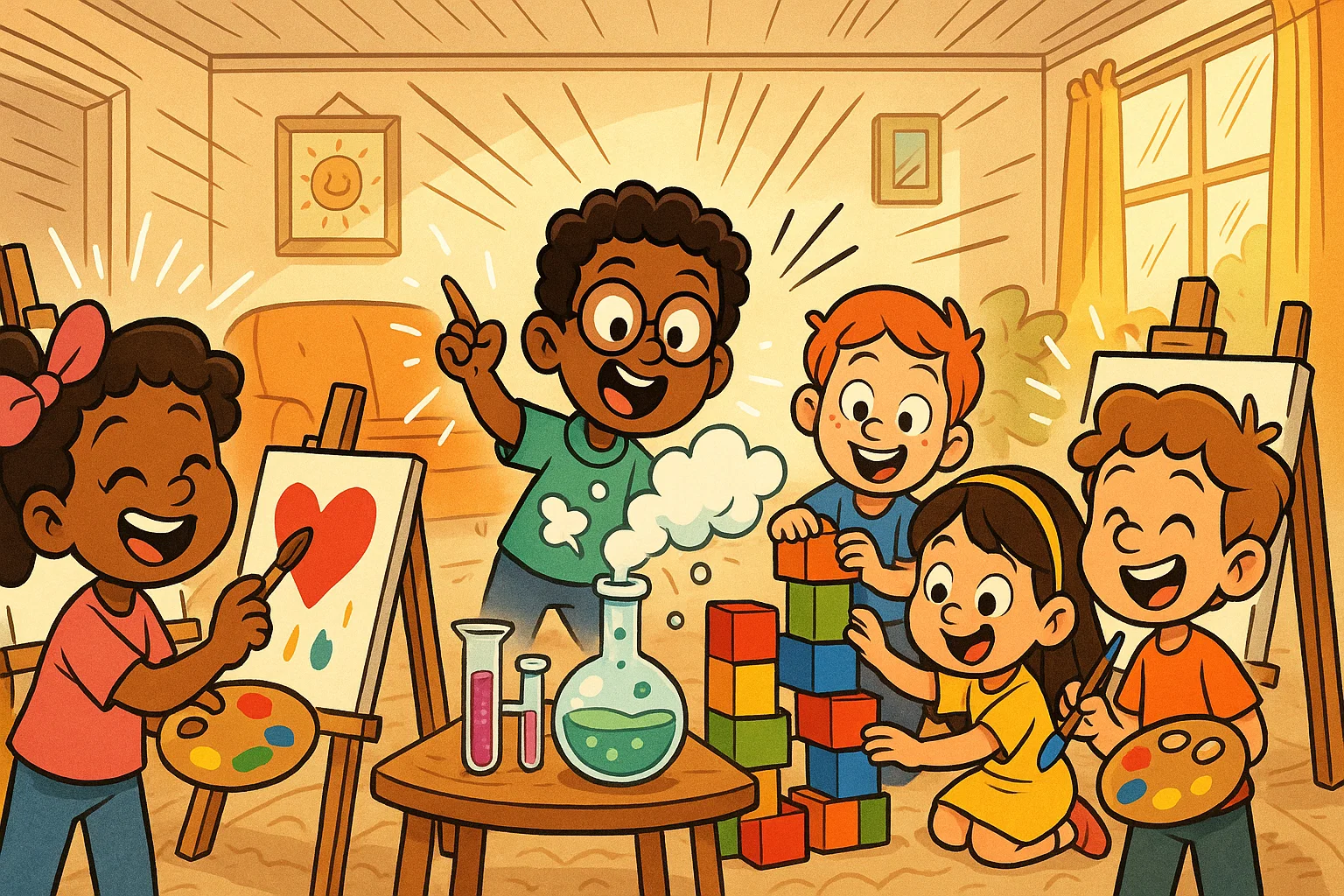
The afternoon hours between school dismissal and dinner can feel like an eternity for both parents and children. Finding the right balance of fun, educational, and manageable activities can transform these potentially chaotic hours into cherished family moments.
Whether you’re a working parent seeking quick 15-minute activities or a caregiver with more time to invest, this comprehensive guide offers 30 creative afterschool activity ideas that cater to different energy levels, interests, and developmental stages. From quiet crafts that help children decompress after school day to high-energy games that burn off excess excitement, these activities are designed to engage young minds while creating lasting memories.
Activity Ideas by Category
Organizing afterschool activities by category helps you quickly identify options that match your child’s current mood and energy level. Some days call for quiet, contemplative activities after an intense school day, while others demand physical movement and social interaction. The key is having a diverse toolkit of options that can adapt to your family’s changing needs throughout the school week.
Age-Appropriate Considerations:
- Ages 4-6: Focus on sensory play, simple crafts, and activities lasting 10-20 minutes
- Ages 7-9: Introduce more complex projects, basic cooking, and collaborative games
- Ages 10+: Encourage independent creativity, advanced STEM projects, and leadership roles
Art and Creativity 🎨
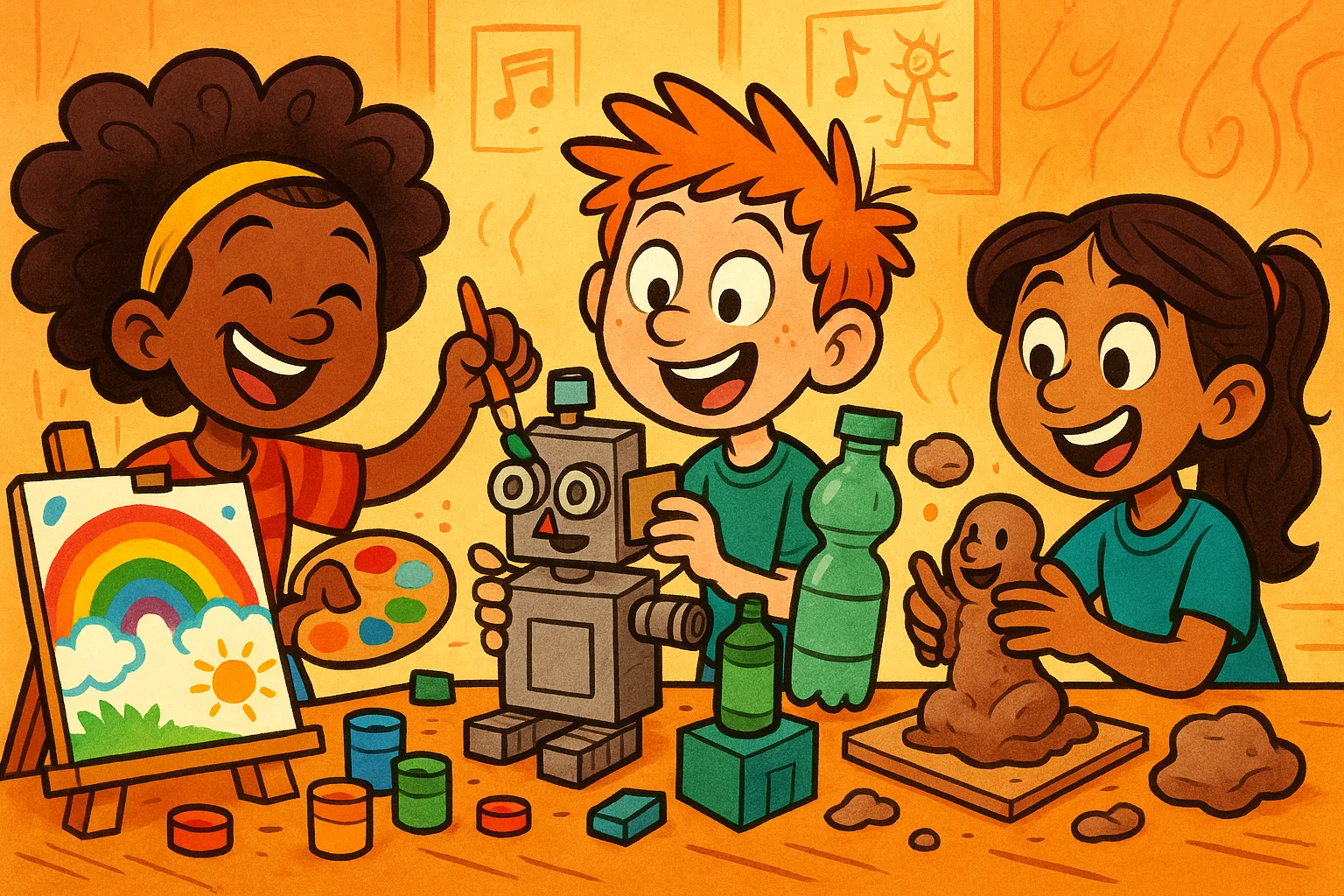
Creative activities serve as natural stress relievers for children transitioning from structured school environments. Art projects encourage self-expression while developing fine motor skills and problem-solving abilities. According to child development specialists, creative play can improve emotional regulation and boost confidence in young learners, especially after long school days filled with academic pressure.
Painting with Nature Objects
Transform your backyard into an art studio by collecting leaves, pinecones, flowers, and smooth stones. This activity connects children with nature while encouraging artistic exploration after being indoors at school all day. Create paintbrushes from twigs and leaves, or use natural objects as stamps to make unique patterns on paper.
Materials needed: Washable paints, paper, collection containers Time required: 30-45 minutes Best for: All ages (with supervision for younger children)
Shaving Cream Masterpieces
Shaving cream art offers a sensory-rich experience that’s particularly appealing to tactile learners who may feel restricted during school hours. Spray shaving cream onto a tray, add food coloring drops, and let kids create marbled patterns with toothpicks or craft sticks. Press paper onto the surface to transfer the design.
Pro tip: This activity works wonderfully as a calming transition from high-energy school days. The sensory input helps regulate emotions while producing beautiful abstract art pieces.
Playing with Colored Foam
Create colorful foam by mixing liquid soap with food coloring and whipping with a hand mixer. Children can sculpt, mold, and play with this safe, washable medium. It’s particularly effective for quieter afternoon activities when siblings need different energy outlets after returning from school.
Making Sensory Bins
Sensory bins provide therapeutic benefits while encouraging imaginative play, offering a perfect contrast to structured school learning. Fill large containers with materials like rice, pasta, or sand, then add small toys, scoops, and containers for exploration. Themes can include “ocean rescue,” “construction site,” or “fairy garden.”
Sensory Bin Ideas by Season:
- Fall: Dried corn kernels with mini pumpkins and autumn leaves
- Winter: White rice “snow” with polar animal figures
- Spring: Green rice “grass” with flower petals and garden tools
- Summer: Blue water beads with sea creatures and shells
Upcycling Old Items
Teaching children to transform household items into art projects builds environmental awareness while fostering creativity. Empty cereal boxes become castles, plastic bottles turn into planters, and old socks transform into puppets. This approach also helps families reduce waste while creating meaningful projects together afterschool.
Brain Games 🧠
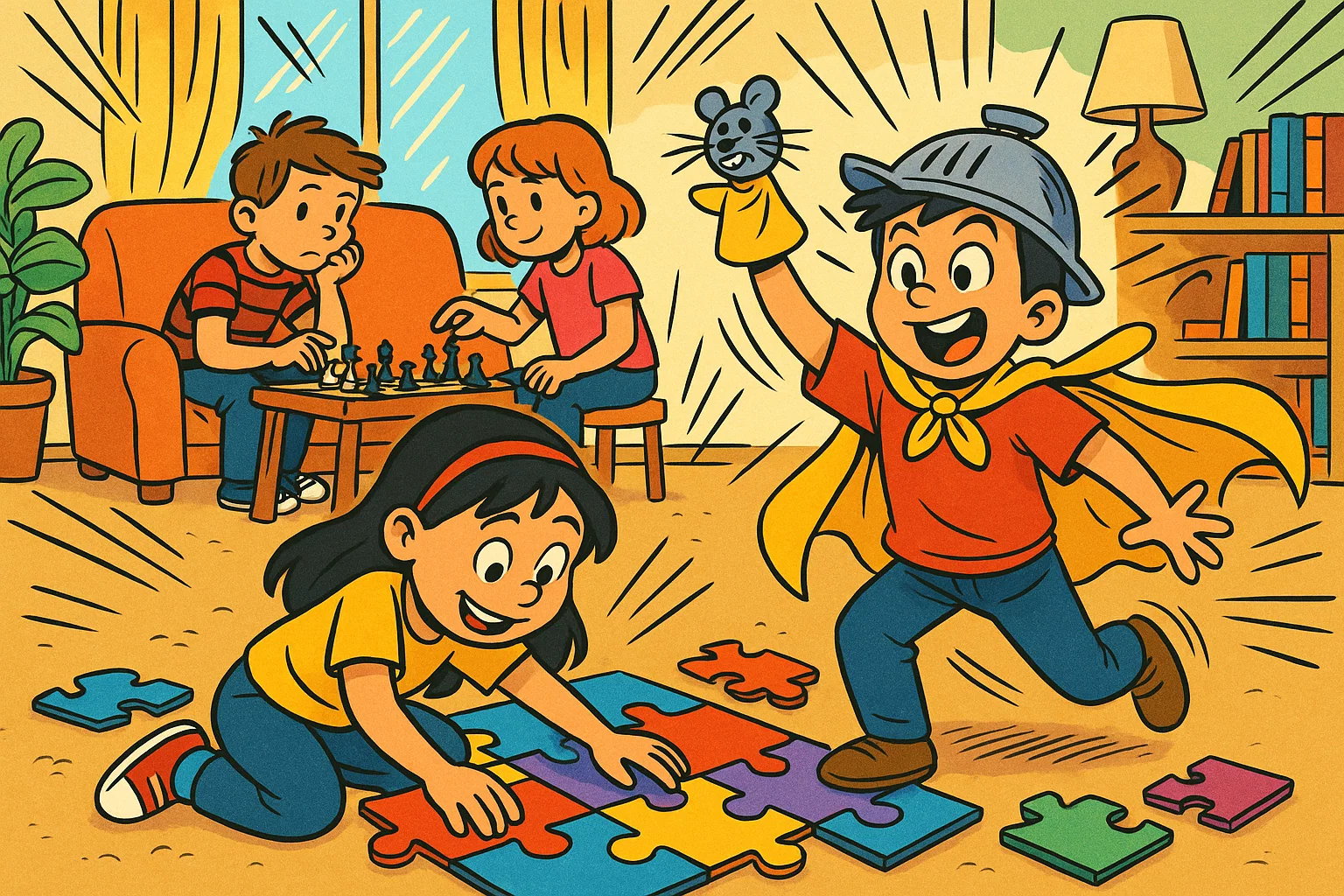
Cognitive activities help children process their school day while building critical thinking skills in a relaxed, fun environment. These games can be adapted for different skill levels and often require minimal materials, making them perfect for spontaneous after-school fun when energy levels vary after different school experiences.
Storytelling
Collaborative storytelling exercises imagination while improving verbal communication skills that complement school learning. Start with a simple prompt like “Once upon a time, in a magic forest…” and take turns adding sentences. For reluctant storytellers, try story cubes or picture prompts to spark creativity after a day focused on structured school assignments.
Variation ideas:
- Round-robin stories where each family member adds one sentence
- Story-building using random household objects as inspiration
- Creating stories about school adventures or favorite classroom memories
Writing Poems
Poetry writing doesn’t require perfect grammar or complex vocabulary, offering creative freedom after structured school writing assignments. Start with simple formats like acrostic poems using the child’s name or favorite animal. Haiku poems work well for older children, encouraging them to observe nature and express thoughts concisely.
Research from the Indonesian Journal of Applied Linguistics suggests that creative writing activities can improve overall academic performance by strengthening language processing skills and boosting confidence in self-expression, complementing school curriculum effectively.
Puppet Show
Creating and performing puppet shows combines creativity, storytelling, and dramatic play – skills that support school-based learning while offering creative expression. Use socks, paper bags, or craft sticks to make simple puppets. Children love retelling favorite stories or creating original performances for family audiences, often incorporating themes from their school day.
Setup suggestions:
- Drape a blanket over two chairs for an instant puppet theater
- Use a large cardboard box with a window cut out
- Perform behind a couch or table for younger puppeteers
Puzzles
Puzzle-solving activities strengthen spatial reasoning and patience while providing quiet, focused time after busy school schedules. Age-appropriate puzzles range from 24-piece options for young children to 500+ piece challenges for older kids. Consider rotating puzzle collections to maintain interest and provide fresh challenges that differ from school-based problem-solving.
| Age Range | Recommended Pieces | Skills Developed |
| 3-5 years | 12-24 pieces | Hand-eye coordination, shape recognition |
| 6-8 years | 60-100 pieces | Problem-solving, patience |
| 9-12 years | 200-500 pieces | Advanced spatial reasoning, persistence |
Physical Activities 🏃♀️
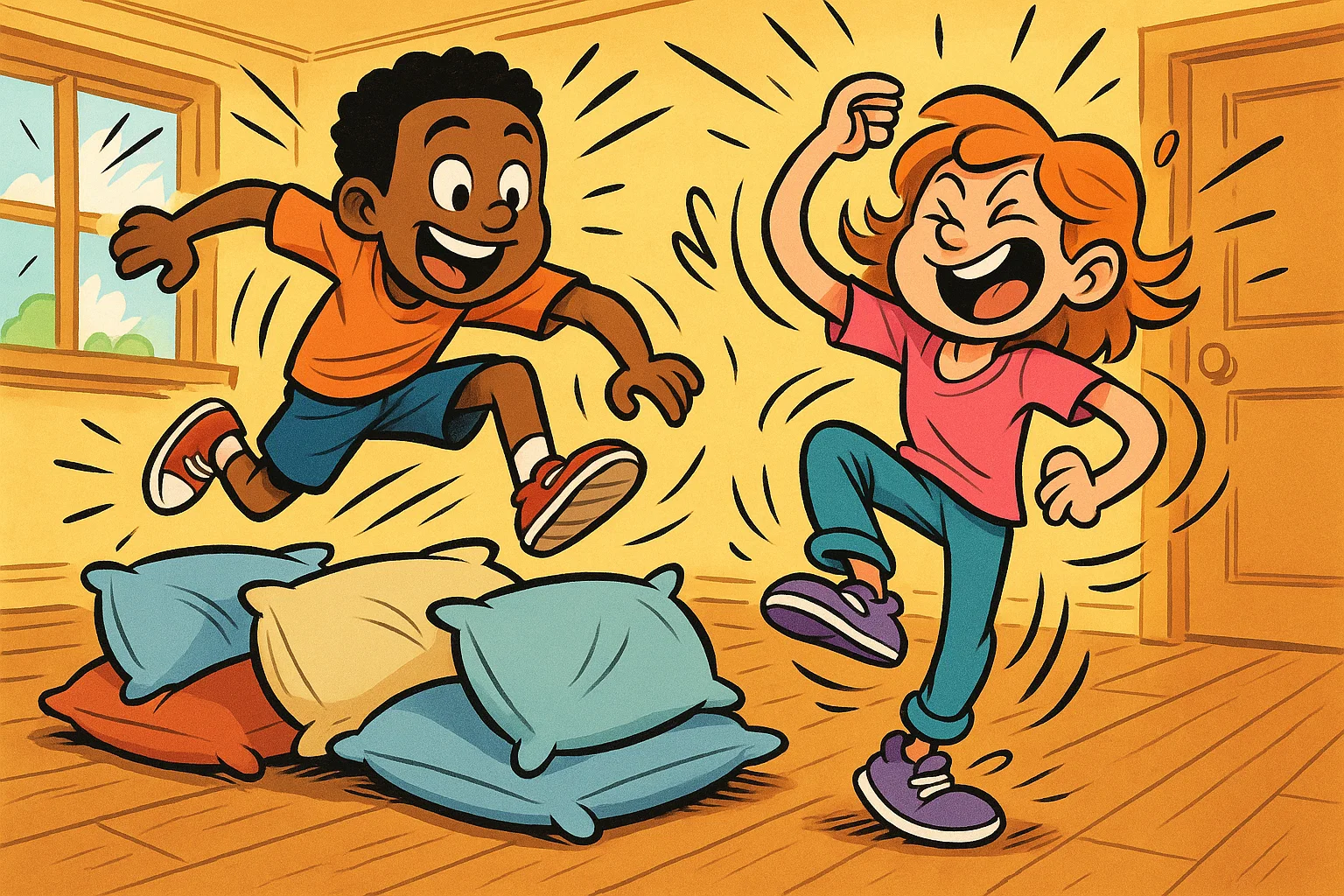
After sitting in school classrooms all day, children often need opportunities to move their bodies and release physical energy. These activities can be adapted for indoor or outdoor spaces, depending on weather and available room, providing necessary movement after sedentary school hours.
Dance Party
Dancing provides cardiovascular exercise while boosting mood through music and movement, offering a perfect energy release afterschool. Create playlists with your child’s favorite songs, or explore different musical genres and cultural dances. Dancing together strengthens family bonds while promoting physical fitness that complements school physical education programs.
Dance activity variations:
- Freeze dance for impulse control practice
- Copy-cat dancing to improve coordination
- Cultural dance exploration for learning about different traditions
Obstacle Course
Design indoor or outdoor obstacle courses using household items like pillows, chairs, and jump ropes. Children develop gross motor skills, balance, and coordination while having fun after sitting at school desks. Timing runs and creating challenges adds competitive excitement for older kids who may need extra physical stimulation after school.
Indoor obstacle ideas: Crawl under tables, hop on one foot around pillows, balance walk along a tape line Outdoor obstacle ideas: Run around trees, jump over sticks, crawl through cardboard tunnels
Lego Hunt
Hide Lego pieces or small building blocks around the house, then challenge children to find and build something creative with their discoveries. This activity combines physical movement with construction play, making it ideal for kids who love both active and quiet games afterschool.
Movement Chain Game
Similar to “Simon Says,” but children add movements to create a sequence that grows longer with each turn. Start with simple actions like “clap your hands,” then add “touch your toes,” continuing until the sequence becomes challenging to remember. This game develops memory skills while providing physical activity that contrasts with school-based learning.
Cooking Activities 👩🍳
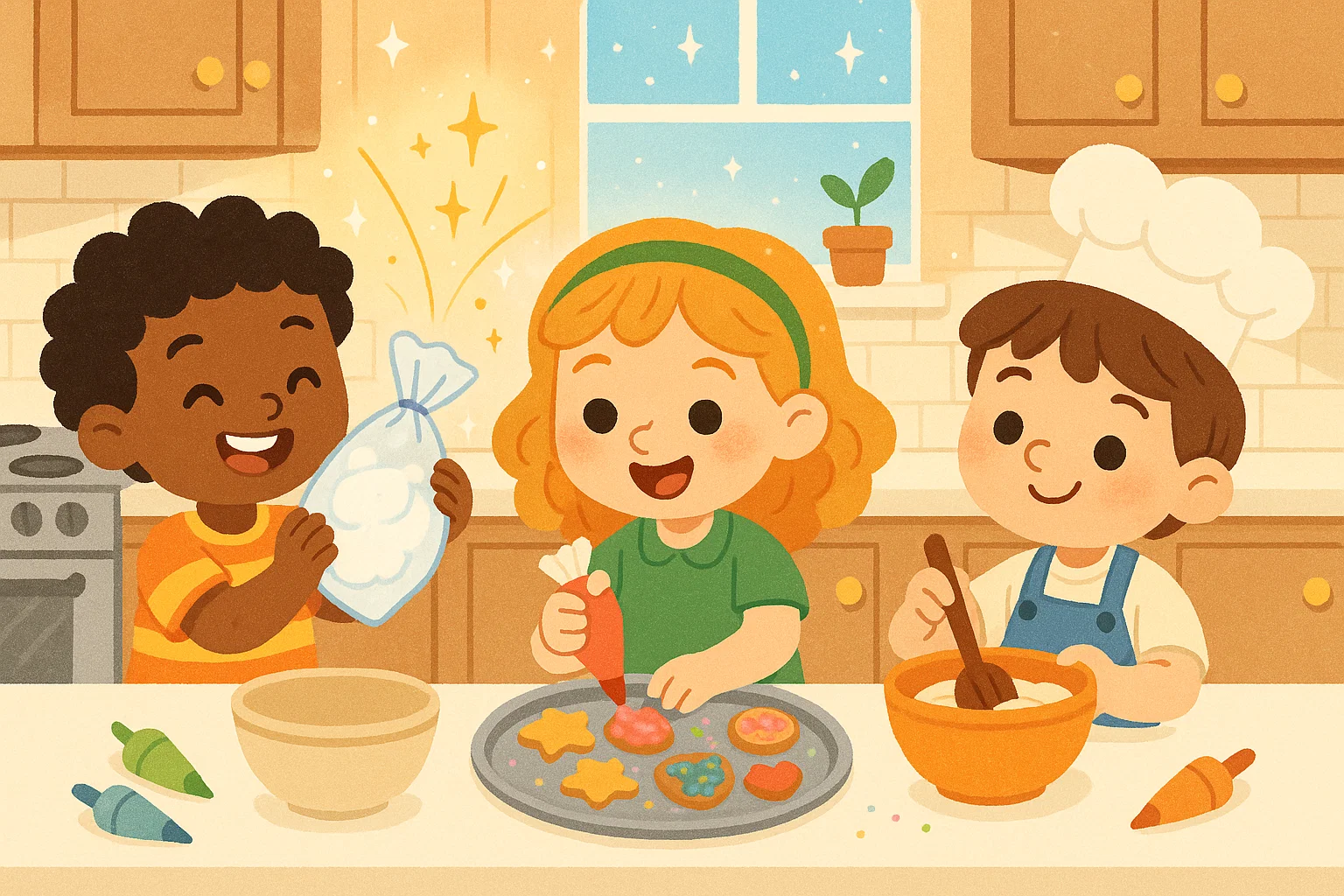
Cooking with children teaches practical life skills while creating opportunities for quality time and conversation afterschool. These activities can accommodate different skill levels and dietary preferences while producing delicious results that kids love to share, often incorporating lessons that support school nutrition education.
Ice Cream in a Bag
This simple science experiment creates a sweet treat in about 10 minutes, offering hands-on learning that complements school science lessons. Place milk, sugar, and vanilla in a small zip-lock bag, seal it inside a larger bag filled with ice and salt, then shake vigorously. The chemical reaction creates ice cream while teaching basic scientific principles.
Learning opportunities: Discuss freezing points, chemical reactions, and measurement skills while creating this tasty snack that reinforces school science concepts.
Baking Something Together
Baking projects teach measurement, following directions, and patience while creating something delicious to share. Simple recipes like muffins, cookies, or bread allow children to practice reading skills while learning kitchen safety and techniques that extend school-based learning into practical applications.
Kid-friendly baking ideas:
- No-bake energy balls with oats and honey
- Simple muffins with favorite mix-ins
- Decorated sugar cookies for special occasions
- Homemade pizza with creative toppings
Food Art
Creating art with food combines creativity with nutrition education, reinforcing healthy eating concepts often taught in school. Arrange colorful fruits and vegetables into pictures, make faces on pancakes, or design edible landscapes on plates. This approach often encourages picky eaters to try new foods while having fun with meal preparation.
STEM Activities 🔬
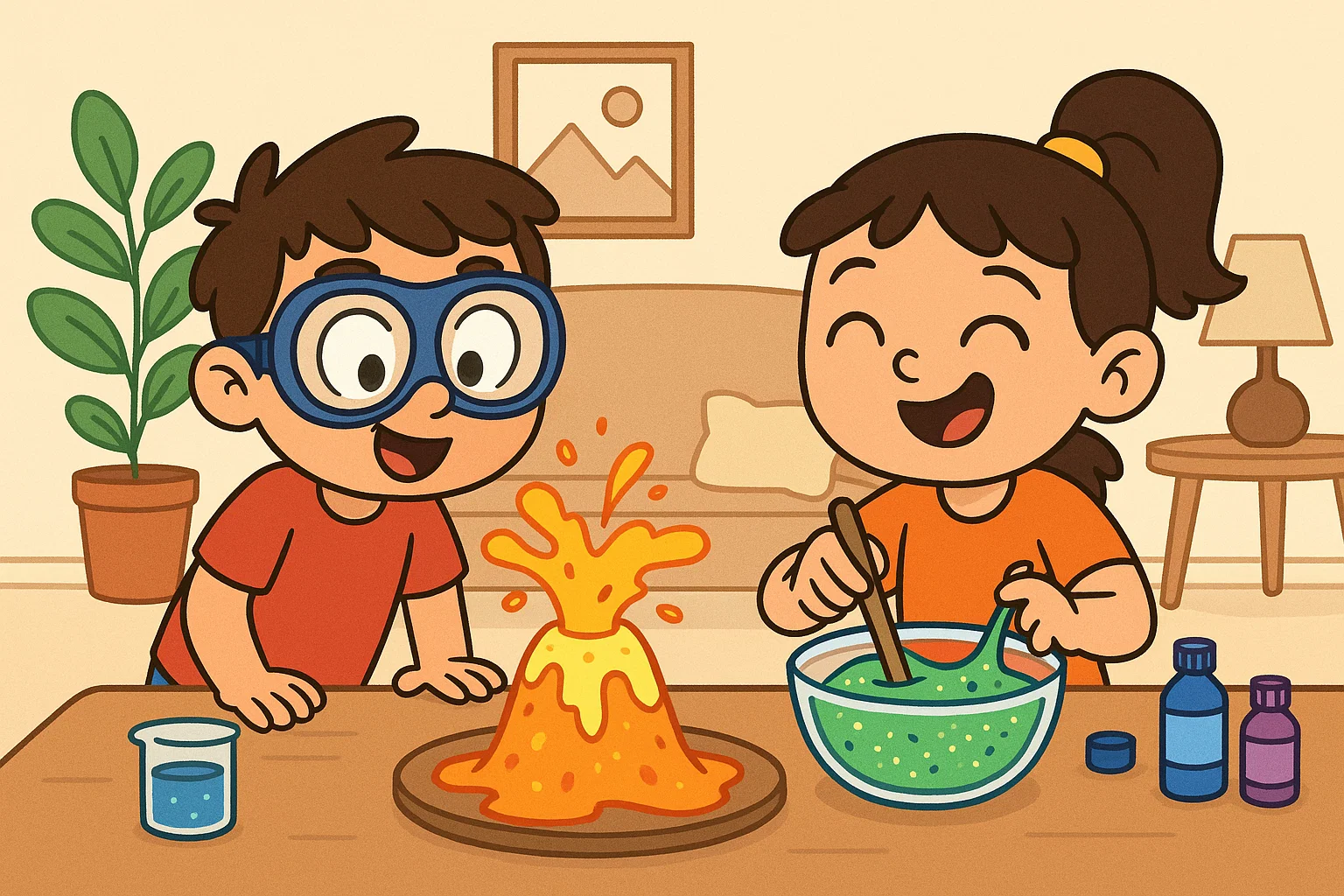
Science, technology, engineering, and math activities encourage critical thinking while demonstrating how school learning applies to real-world situations. These hands-on experiments spark curiosity and may inspire future interests in STEM fields, extending classroom science lessons into engaging home experiments.
Cabbage Color Experiment
Red cabbage juice serves as a natural pH indicator, changing colors when mixed with different household substances. This experiment teaches basic chemistry while creating beautiful color reactions that fascinate children of all ages, providing hands-on reinforcement of school science concepts.
Materials needed: Red cabbage, hot water, clear containers, various household liquids (lemon juice, baking soda, soap) Learning outcomes: Understanding acids and bases, observation skills, hypothesis formation
DIY Lemon Volcanoes
Create exciting chemical reactions using lemons, baking soda, and food coloring. Cut lemons in half, scoop out some flesh, add baking soda and food coloring, then squeeze the lemon to create a foaming “eruption.” This activity demonstrates acid-base reactions in a fun, memorable way that supports school chemistry lessons.
Glitter Slime
Making slime combines chemistry lessons with sensory play, offering hands-on learning that complements school science curriculum. Mix glue, contact lens solution, and shaving cream to create stretchy, moldable slime. Add glitter, beads, or foam balls for extra sensory appeal. Children learn about polymers and chemical reactions while creating a toy they can play with repeatedly.
Safety note: Adult supervision is essential when using contact lens solution, and children should wash hands thoroughly after play.
FAQ
How long should afterschool activities last?
Activity duration varies by age and attention span, especially considering energy levels after school. Younger children (ages 4-6) typically engage for 10-20 minutes, while older kids (ages 8+) may enjoy 30-60 minute projects. Watch for signs of fatigue or frustration afterschool, and be flexible with timing based on your child’s energy level and interest.
What if my child resists trying new activities afterschool?
Start with activities that incorporate your child’s existing interests or connect to positive school experiences. If they love animals, try animal-themed crafts or science experiments. Offer choices between two or three options rather than overwhelming them with too many possibilities after school day.
How can I manage multiple children with different ages during afterschool activity time?
Choose activities that can be modified for different skill levels, such as art projects where younger children color while older ones write stories. Consider pairing children as “buddies” or creating activity stations where kids can rotate based on their interests and abilities, similar to school learning centers.
Are screen-based activities acceptable for afterschool time?
While educational screen time can be valuable, especially for extending school learning, the American Academy of Pediatrics recommends balancing digital activities with hands-on play, physical movement, and face-to-face interaction. If using screens afterschool, choose interactive educational content rather than passive entertainment.
How do I handle cleanup after messy activities following school?
Build cleanup into the activity itself by making it part of the fun, teaching responsibility that supports school behavior expectations. Use washable materials when possible, lay down protective coverings, and assign age-appropriate cleanup tasks to each child. Having designated cleanup supplies easily accessible makes the process smoother for everyone involved.
